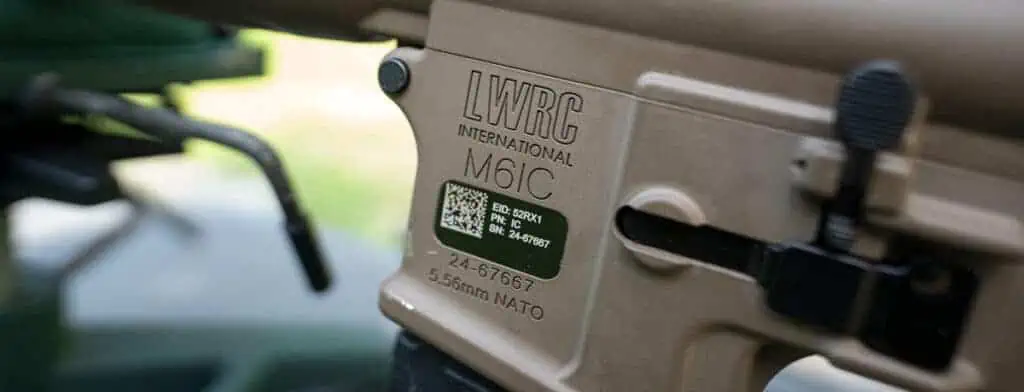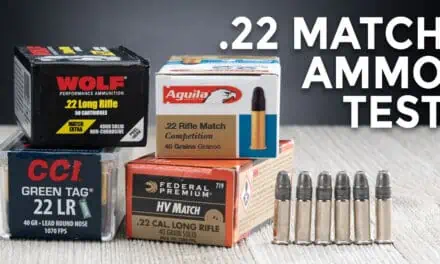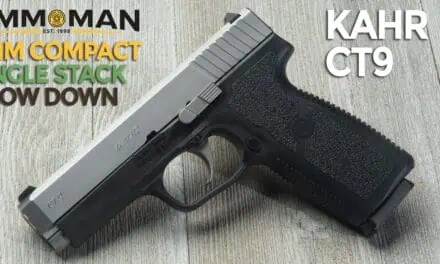5.56 Twist Rate Chart
Need a 5.56×45 twist rate chart for an AR-15 or other 5.56 firearm? Let’s kick this 5.56 barrel twist guide off right by getting straight to the point!
| Bullet | 40 Grain | 45 Grain | 50 Grain | 55 Grain | 60 Grain | 62 Grain | 65 Grain | 69 Grain | 70 Grain | 75 Grain | 77 Grain | 80 Grain | 85 Grain | 90 Grain |
|---|---|---|---|---|---|---|---|---|---|---|---|---|---|---|
| 1:16" | Good | Good | Ok | Ok | Poor | Poor | Poor | Poor | Poor | Poor | Poor | Poor | Poor | Poor |
| 1:14" | Good | Good | Good | Ok | Ok | Ok | Poor | Poor | Poor | Poor | Poor | Poor | Poor | Poor |
| 1:12" | Ok | Ok | Good | Good | Good | Ok | Ok | Ok | Ok | Poor | Poor | Poor | Poor | Poor |
| 1:10" | Poor | Ok | Ok | Good | Good | Good | Good | Good | Ok | Ok | Ok | Poor | Poor | Poor |
| 1:9" | Poor | Ok | Ok | Ok | Good | Good | Good | Good | Good | Ok | Ok | Ok | Ok | Poor |
| 1:8" | Poor | Poor | Ok | Ok | Ok | Good | Good | Good | Good | Good | Good | Good | Ok | Ok |
| 1:7" | Poor | Poor | Poor | Ok | Ok | Ok | Good | Good | Good | Good | Good | Good | Good | Ok |
| 1:6" | Poor | Poor | Poor | Poor | Ok | Ok | Ok | Ok | Ok | Good | Good | Good | Good | Good |
Need to know why the information on that table is important to an AR-15 owner? Then keep reading!
What Is Rifling?

Inside the barrel of a rifle, photo courtesy of Shooting Times.
If you look inside a modern rifle or handgun’s barrel, you will see rifling. (Make certain the firearm is not loaded before attempting this.) Rifling is the helical grooves and lands machined into the internal surface (aka the bore) of a barrel.
Don’t have a gun barrel to look down? No worries – you have already seen rifling if you have watched a James Bond movie. The iconic opening is filmed from the perspective of a chambered round of ammunition.
Rifling has an important job to do. Its grooves and lands actively engage with a bullet as it passes through the barrel. This forces the bullet to rotate – and thanks the fundamental law of angular momentum, the bullet will continue to rotate after exiting the barrel.
A bullet which rotates in flight along its longitudinal axis possesses something called “aerodynamic stability.” Just like an expertly thrown football, a stabilized bullet keeps its tip pointed forward to achieve better accuracy over longer distances. This is why rifled barrels are significantly more accurate than smoothbores.
What Is Twist Rate?
A gun barrel’s twist rate (aka rate of twist or barrel twist) indicates how many inches it takes its rifling to make one complete rotation. Twist rate is expressed as a ratio of 1:X” (i.e. 1 turn per X inches).
It’s easier to understand twist rate with an example. Suppose a 20” barrel has a twist rate of 1:10”. That means the barrel’s rifling makes exactly two complete rotations from start to finish. A bullet which passes through such a barrel would accordingly rotate exactly twice before clearing the muzzle.
Twist rates are often compared to one another as “faster” or “slower.” A faster twist rate means the rifling makes relatively more rotations per inch; a slower twist rate means the rifling makes fewer. For example, 1:6” is a faster twist rate than 1:8”.
What Is the Best Twist Rate for an AR-15?

The best twist rate for a 5.56 firearm (including most AR-15s) depends on the ammunition it is firing. More specifically, it depends on the weight of that ammunition’s bullets. This is because heavy bullets have more inertia, and therefore require more complete rotations to fully stabilize before exiting the muzzle. Conversely, lighter bullets require fewer rotations before they become adequately stabilized.
If you once again refer to our 5.56 twist rate chart, you will see just how bullet weight determines the best rate of twist for an AR-15: green is optimal, yellow is acceptable, and red is inadvisable. Note how heavy bullets perform better in conjunction with faster twist rates, and slower twist rates are better suited for lighter bullets.
The two most popular bullet weights for 5.56 are 55 and 62 grains. From our chart you will see that the best twist rate for 55 grain ammunition (e.g. PMC M193) is 1:12” or 1:10”. The best twist rate for 62 grain ammunition (e.g. M855) is 1:8”, 1:9” or 1:10”. (We would advise sticking to the faster of the three best twist rates for 62 grain bullets.)
What Happens When Twist Rate Is too Slow or too Fast?

When a 5.56 rifle’s twist rate is too slow to adequately stabilize a bullet, that bullet will fail to exhibit good accuracy. The negative effects of insufficient twist may not become apparent until the bullet has flown several hundred yards downrange, but they will inevitably reduce a rifle’s effective range all the same.
Many shooters worry whether an excessive rate of twist will “overstabilize” a lightweight bullet, in turn causing the bullet to rotate so quickly that centrifugal force tears it to pieces. Fortunately, the vast majority of bullets are just too tough to undergo core/jacket separation in response to overstabilization. Unless a bullet is of unusually low quality, it will not exhibit significantly worse accuracy after passing through a barrel with too fast a rate of twist for its weight.
What About 5.56 Twist Rate for Frangible Rounds?
There is an important exception to this rule. Frangible bullets, which are brittle by design to promote safer target shooting, are also at heightened risk of in-flight self-destruction if they are overzealously stabilized by too fast a rate of twist.
Before you study our twist rate chart too closely, take heed that it doesn’t supply all the information you need to achieve the best accuracy out of your rifle. The quality of your ammunition, the quality of your rifle and its barrel, and naturally the quality of your marksmanship all have significant impacts on performance. Atmospheric conditions all play their own roles in influencing ballistic performance as well.
But if you have just gotten your first AR-15 and need to know the best ammo for its barrel, our twist rate chart should prove a great point of reference!





